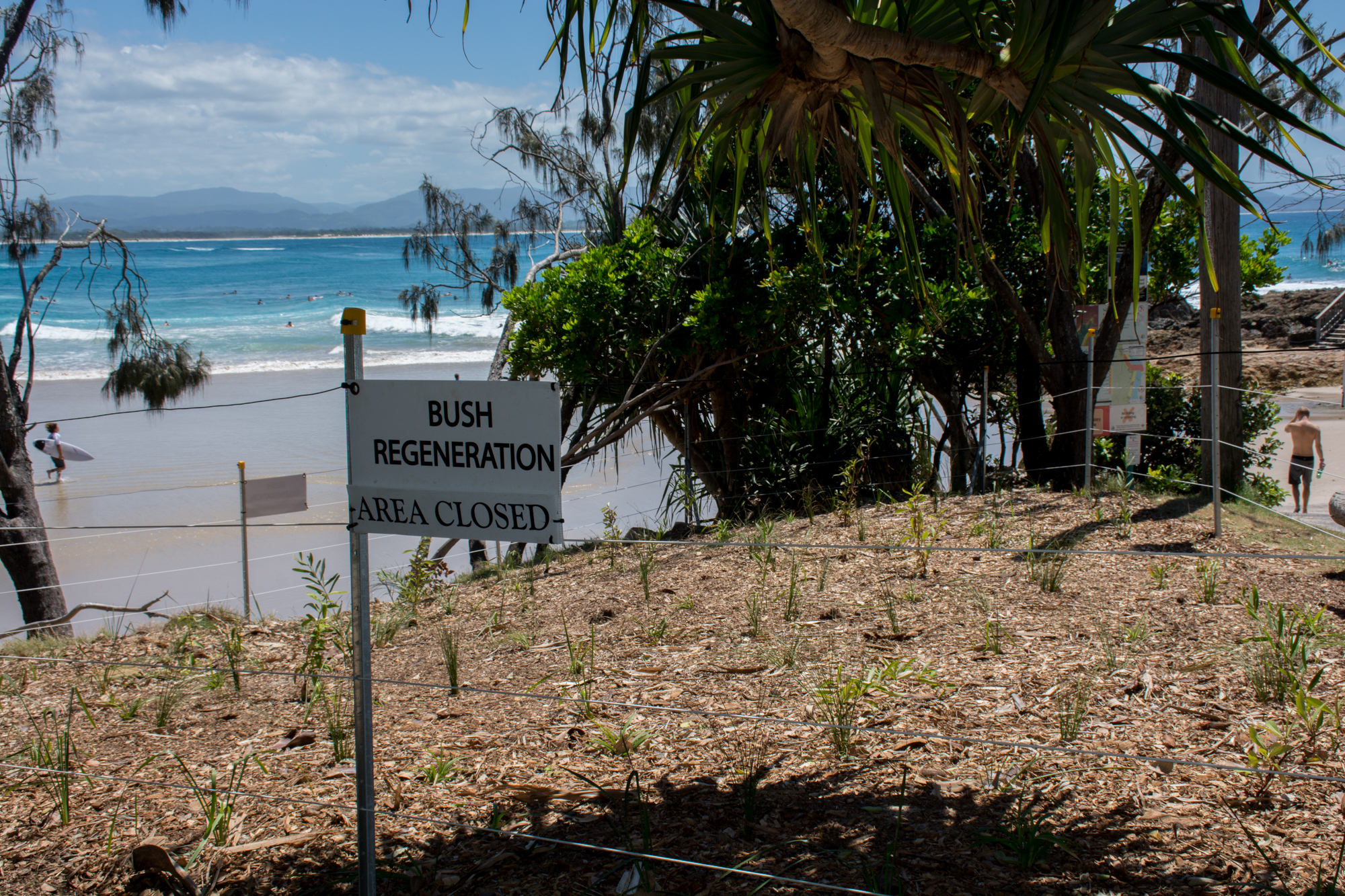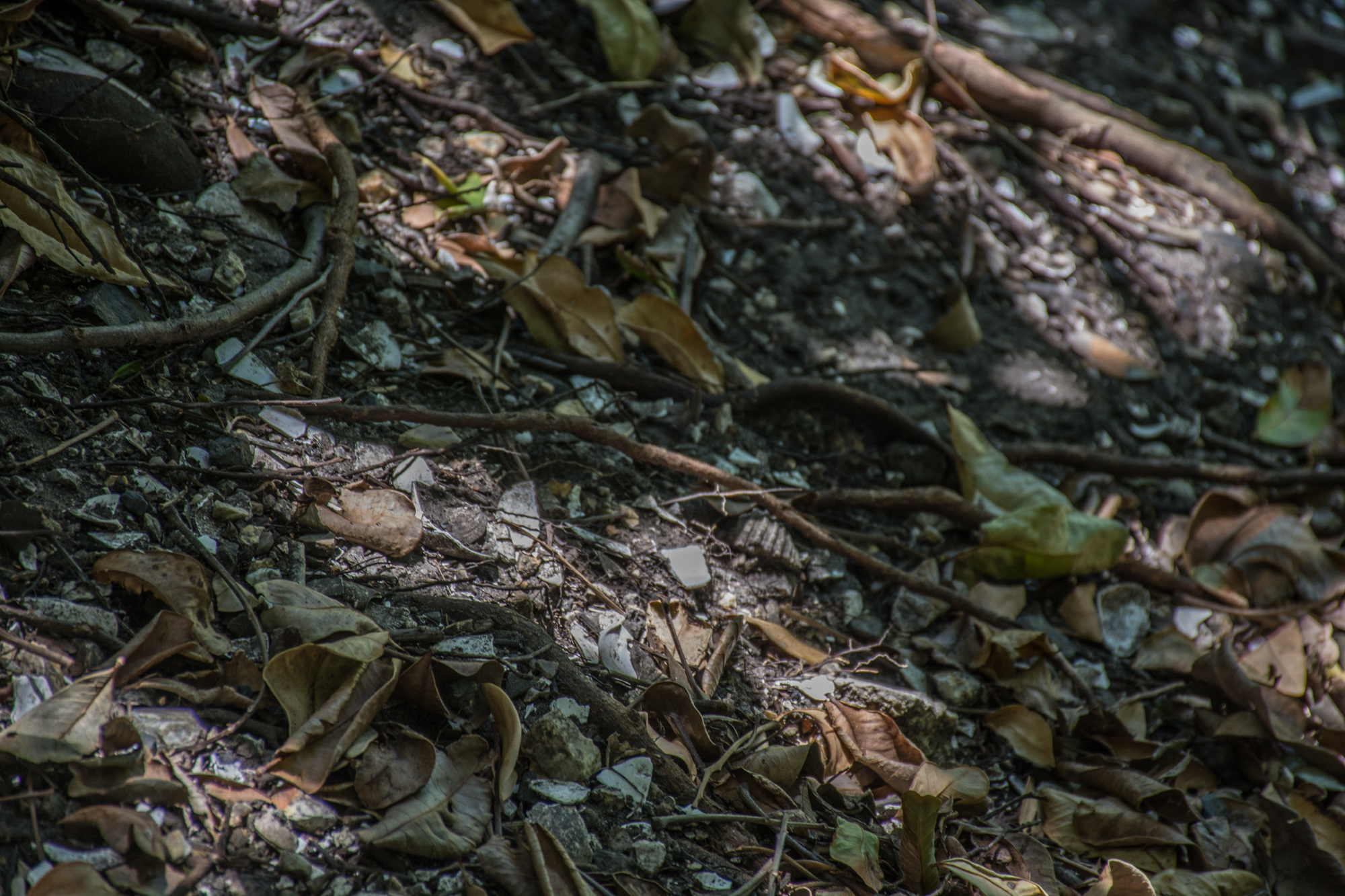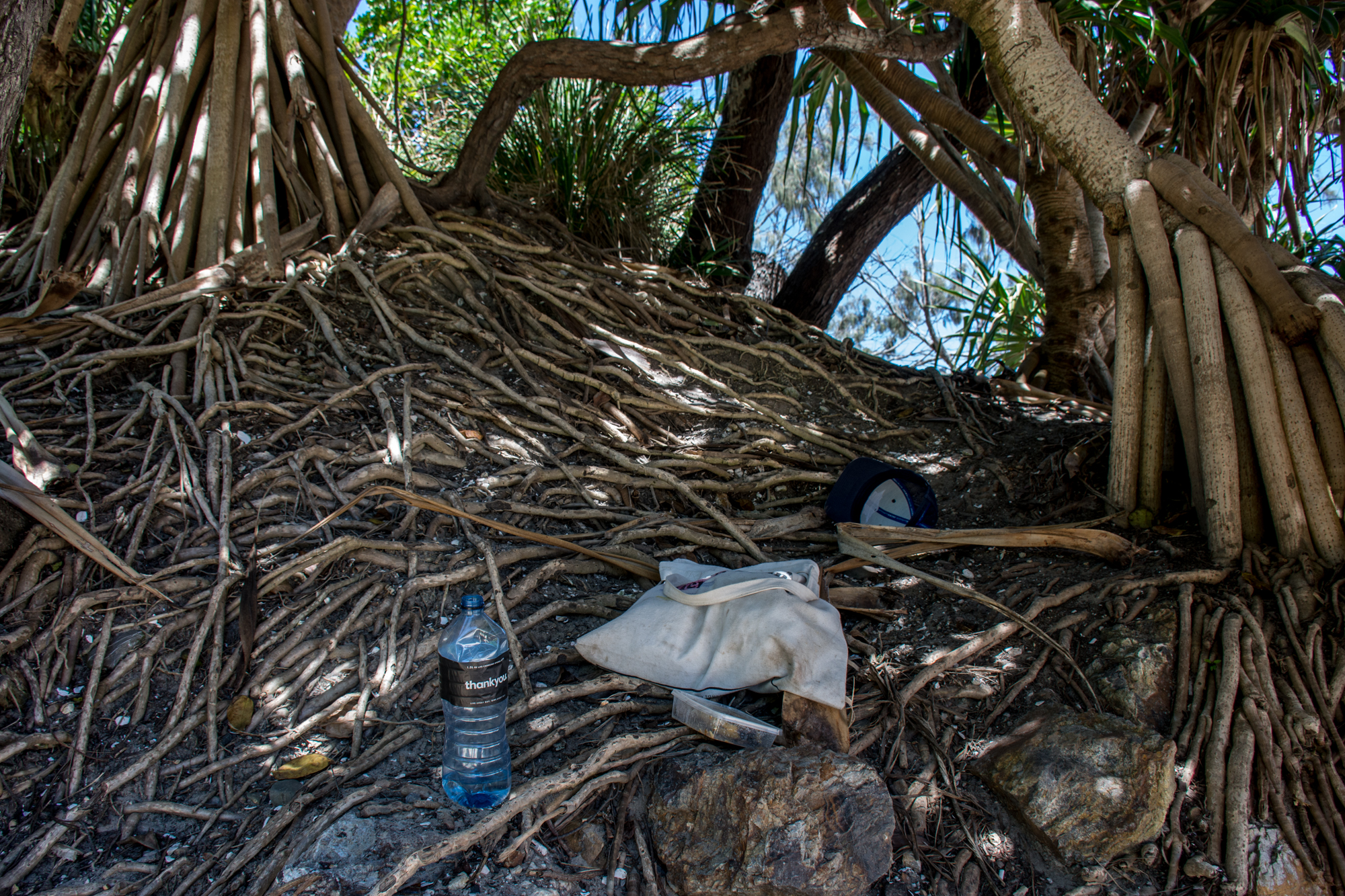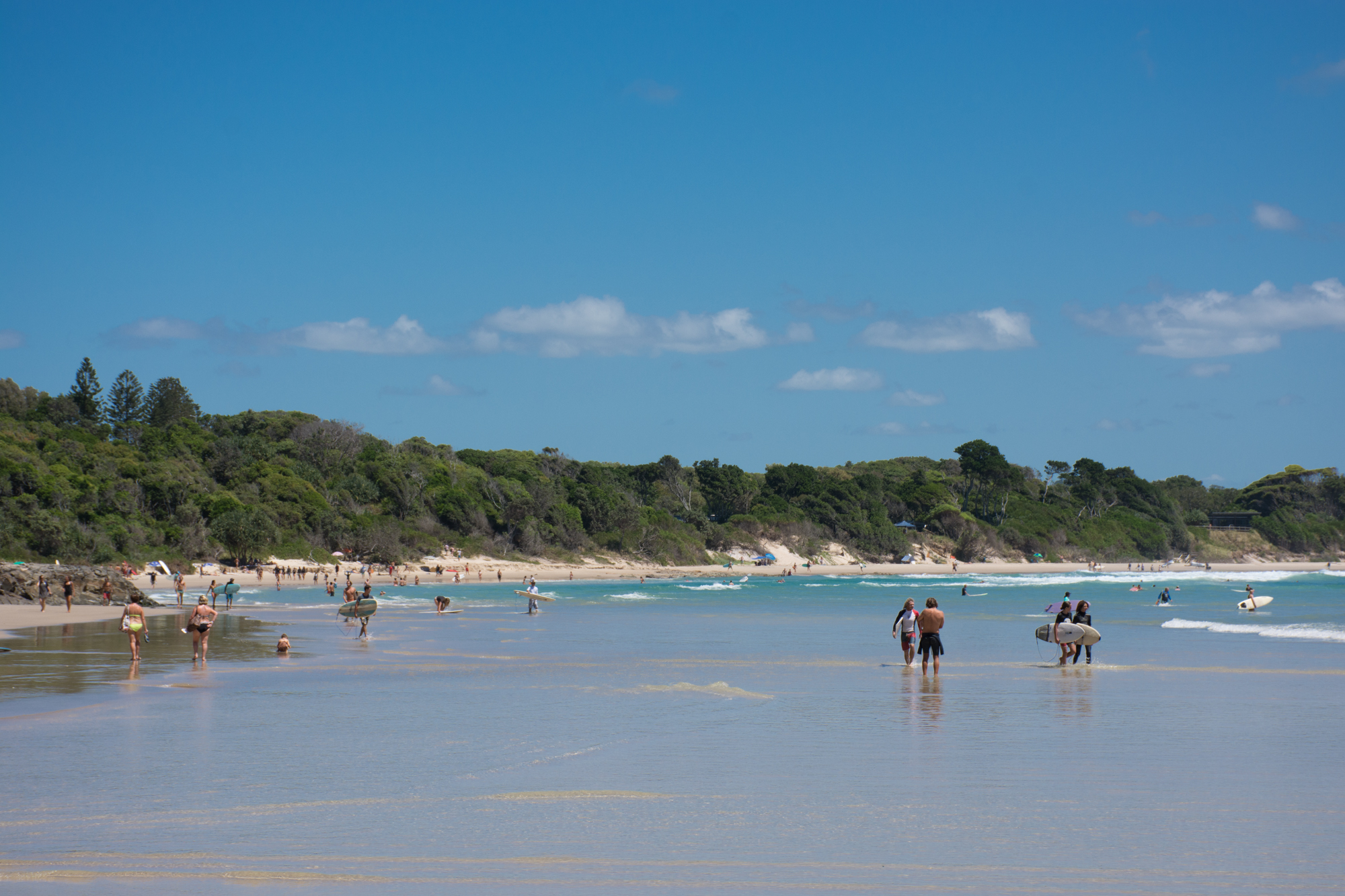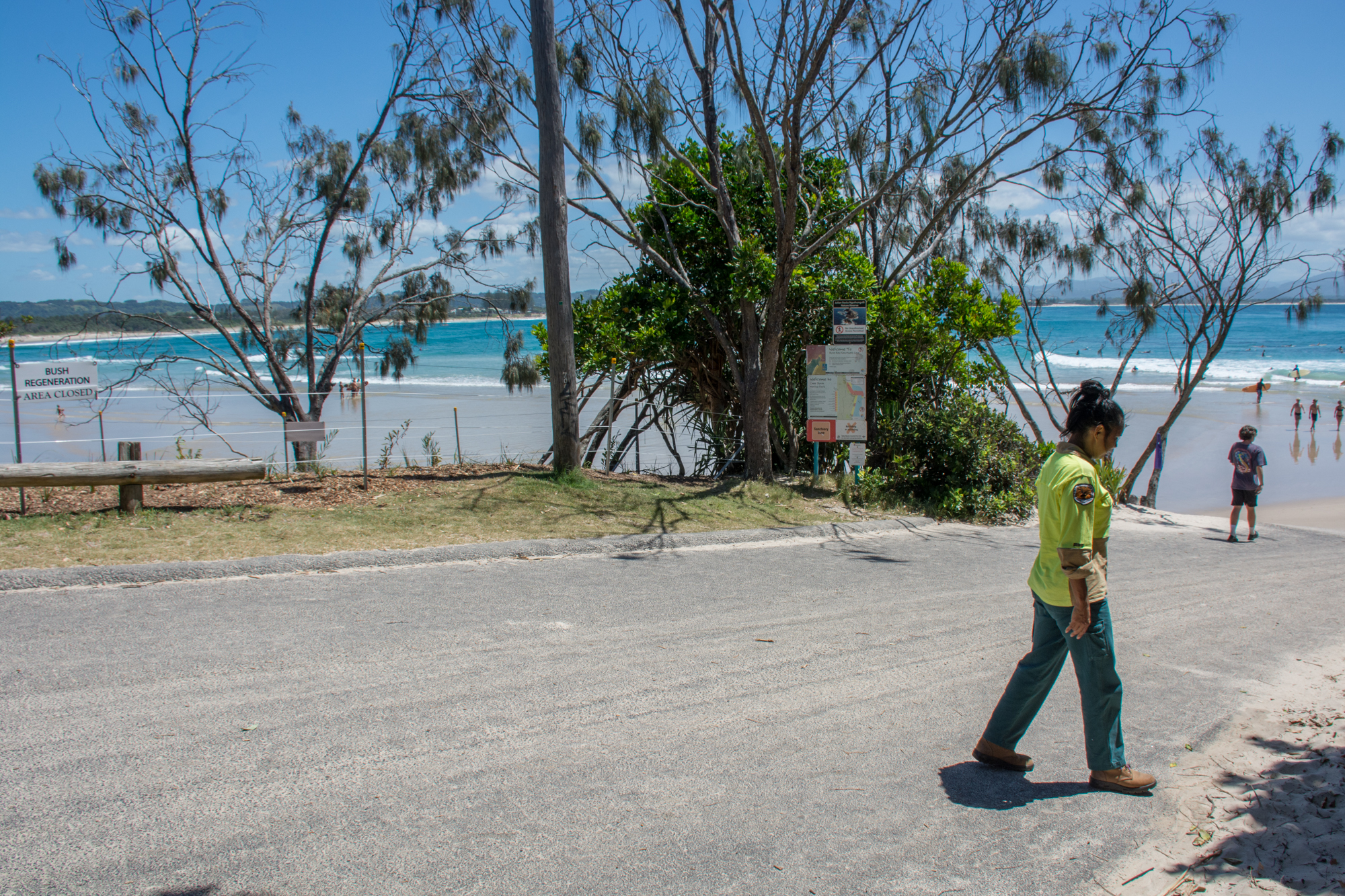
The Arakwal people of Byron Bay are custodians of the land and waters around Byron Bay.
Having spent a big chunk of my early teens living at The Pass (my parents were caretakers and the cafe was our house for a few years in the 80’s) I knew there was a midden at the Pass but I was ignorant to its significance and its size. This afternoon I visited the new plantings that have been put in on the left hand side of the boat ramp, to protect the midden, and was shown around small sections of it by Arakwal woman and my friend since primary school, Delta Kay.
Delta showed me specific areas of the midden and in the photos you will see below there is unfortunately no signage explaining the significance so people just throw their belongings on it and go swimming or surfing. We ask you to respect the bush generation signs and be aware of where you are throwing you towels etc. You will see in the shots when you look closely it is actually easy to spot the ancient shells and other remnants of the midden.
The Pass midden is very unique in the region and assessed as high scientific significance. It is the oldest known large relatively undisturbed fortune pipe midden between Ballina and the NSW-QLD border.
This midden is protected under the National Parks and Wildlife Act (1974) ad due to its scientific significance management of threats, such as visitor impacts are prioritised.
Below is further detail provided to us by The Cape Byron Trust, National Parks and Wildlife Service (NPWS) and Arakwal traditional custodians:
Many significant sites exist within Byron Bay including The Pass midden. The midden is located at the eastern end of Clarkes Beach in the Cape Byron State Conservation Area. The Cape Byron Trust, National Parks and Wildlife Service (NPWS) and Arakwal traditional custodians co-manage the reserve and work together to protect and preserve these sites into the future.
In 1994 the Pass midden was archaeologically surveyed and found to be about 1000 years old, complex and highly significant. The midden is an extension of a large fore-dune base camp located at The Pass and Palm Valley area and part of a midden complex which once stretched over 4km west from Cape Byron.
The midden remains today, with stratified insitu materials underneath and on either side of the boat launch access.
The midden is a key to the past, providing physical evidence about where Aboriginal ancestors gathered, what their cultural practices where, what and how they ate. A range of cultural materials were found including stone artefacts, ochre, charcoal, animal bones, shellfish as well as shells used for personal adornment.
The midden is also a reflection of the many animals that may have existed in and around the Cape Byron area in the past. Many animals found in the midden no longer exist in the Cape Byron State Conservation Area today (i.e. the Red-necked Pademelon, Red- necked Wallaby, Eastern Grey Kangaroo, Greater Glider).
The midden is subject to a range of pressures which may impact the site’s high cultural and scientific value if not effectively managed. These pressures include intensive recreational activities, infrastructure and coastal erosion.
The midden requires regular monitoring to ensure its protection. Recent monitoring found pedestrian use was eroding an area adjacent to the boat launching access exposing and impacting the midden.
Consultation with Arakwal people and Cape Byron Trust members resulted in rehabilitation of the area by fencing and planting. To maintain views of The Pass beach break, low growing shrubs and grasses have been planted. The rehabilitation works will continue to be maintained and visitor impacts monitored.
Management of the midden is consistent with the Cape Byron State Conservation Area plan of management (2002) which states:
- Pedestrian access will continue to be regulated and vegetation cover maintained at The Pass midden.
- All Aboriginal sites will continue to be protected from disturbance or damage by human activities.
